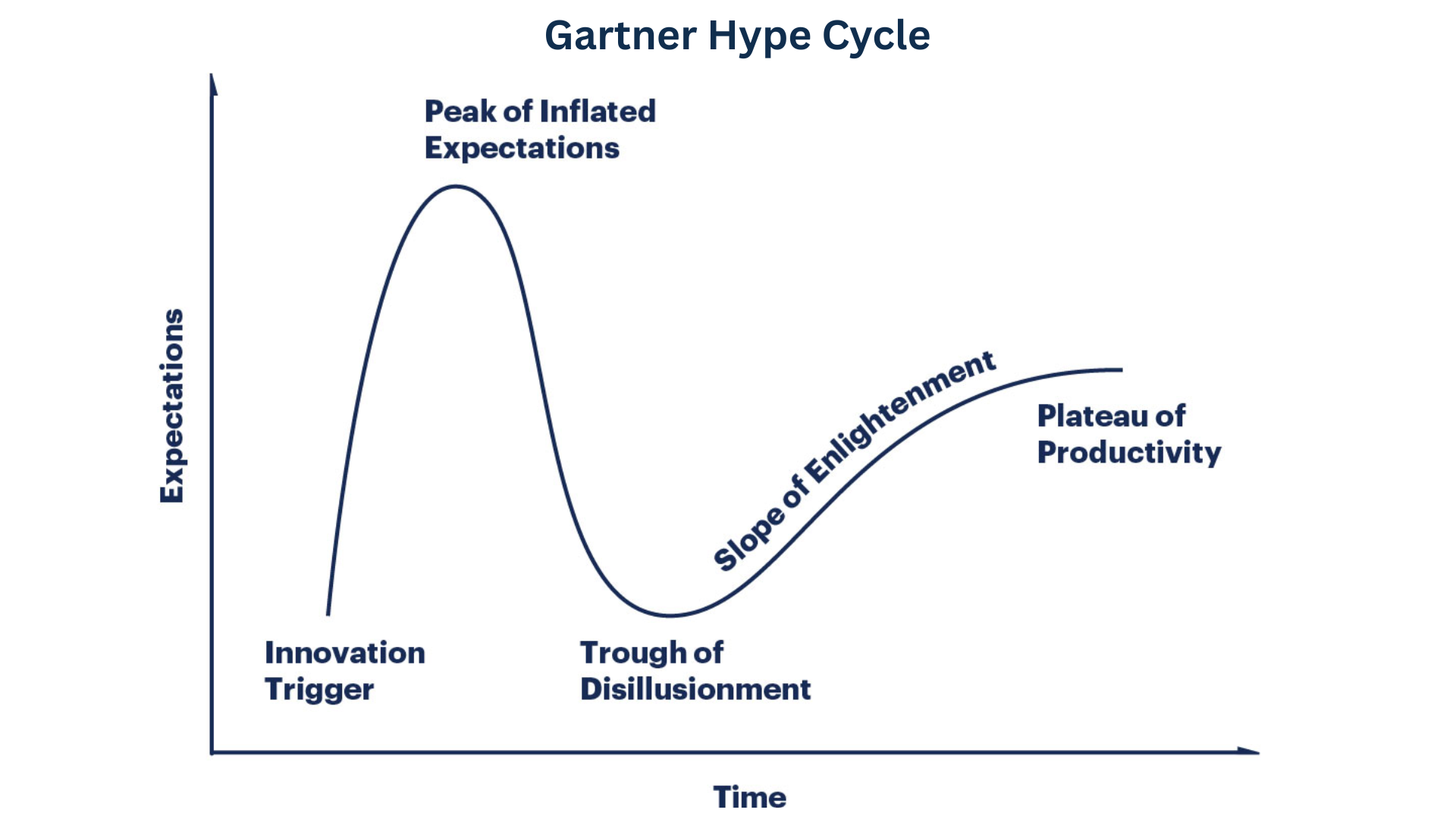The Gartner Hype Cycle and Where AI Stands Today
In the world of emerging technology, there’s a well-known pattern called the Gartner Hype Cycle. It describes how technologies evolve, from an initial burst of excitement, through inflated expectations, a trough of disappointment, and eventually toward a period of realistic adoption and maturity.
I’ve been around technology since the late ’80s, and I’ve seen this pattern play out more times than I can count. From the early days of personal computing to the rise of the internet, the dot-com boom, the AI winters of the 1990s, and more recently the cloud and mobile revolutions, each wave followed its own hype cycle. At first, excitement runs high, expectations soar, and everyone talks about the transformative possibilities. Then reality sets in, challenges emerge, and the hype fades. But inevitably, the technology matures and delivers real value, often in ways that were impossible to foresee at the outset. AI is no different.
Understanding the Slope of Enlightenment
The fourth stage in the Gartner Hype Cycle is known as the Slope of Enlightenment. For AI today, we’re entering that critical stage.
The Slope of Enlightenment is where technology moves beyond hype and disillusionment. At this stage, organizations begin to see practical value and clearer use cases. The focus shifts from lofty promises to grounded results, with more realistic expectations about what the technology can deliver.
For AI, this means a shift from experimental pilots and buzzword-driven projects to strategic implementations that solve real business problems.
Why AI Is on the Slope of Enlightenment
AI has been through the hype cycle before, most recently in generative AI and large language models. The excitement around AI exploded with advancements in capabilities, especially since 2022. But with that hype came unrealistic expectations and confusion about AI’s limitations and risks. That’s why many organizations paused AI projects to reassess value and strategy.
Now, we’re moving into a phase where AI is being deployed with disciplined strategy and purpose. Examples of this include:
- Targeted automation: applying AI to specific workflows rather than general “AI for everything” approaches.
- Responsible AI practices: integrating fairness, explainability, and guardrails into AI deployments.
- AI orchestration: combining multiple specialized models to achieve more accurate and context-aware results.
- Domain-specific applications: using AI trained and tuned for particular industries, such as healthcare, finance, or manufacturing.
The Strategic Implications
For businesses, the Slope of Enlightenment is an opportunity. It’s the stage where AI stops being an experiment and becomes a strategic asset. But getting there requires:
- Clarity of purpose: defining measurable goals for AI adoption.
- Data readiness: ensuring the right quality and volume of data for AI to deliver value.
- Governance and ethics: embedding safeguards for bias, privacy, and explainability.
- Change management: preparing people and processes to integrate AI effectively.
Companies that treat this as a strategic inflection point will emerge as leaders. Those that ignore the reality of this phase risk falling behind.
Looking Ahead
The slope of enlightenment is not a final stage. It leads to the plateau of productivity, where AI delivers sustained business value. But reaching that plateau takes discipline. Organizations must move past hype and focus on building practical, measurable AI solutions that solve real problems.
In 2025, AI is no longer about “if”; it’s about “how.” The Slope of Enlightenment is where companies decide how to make AI work for them, turning vision into value.







